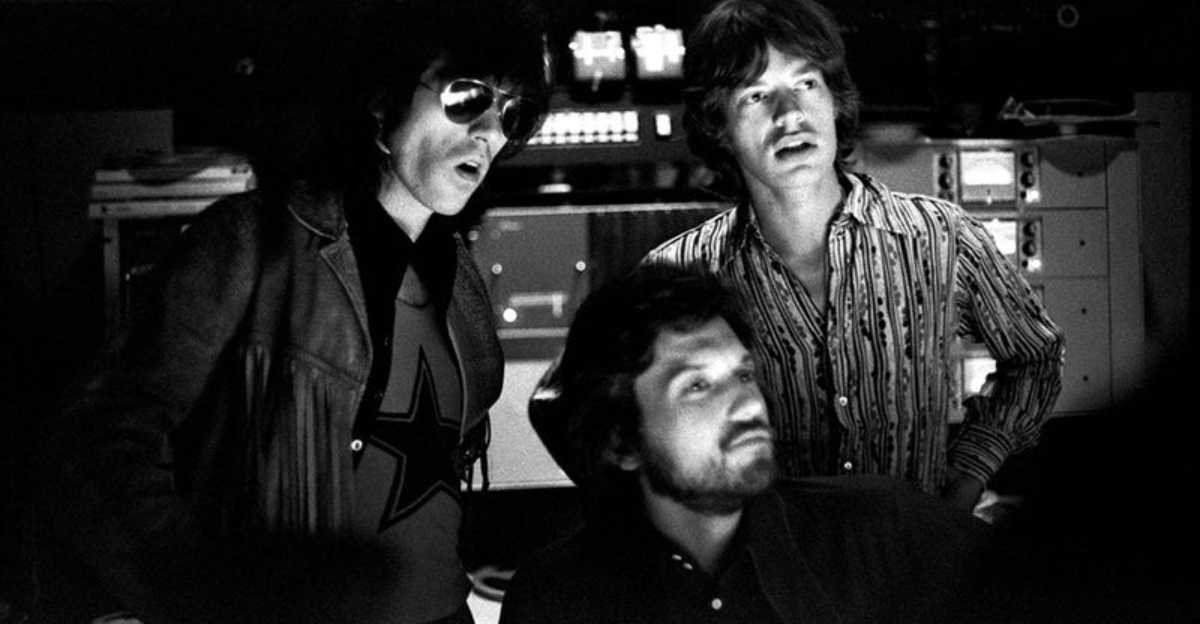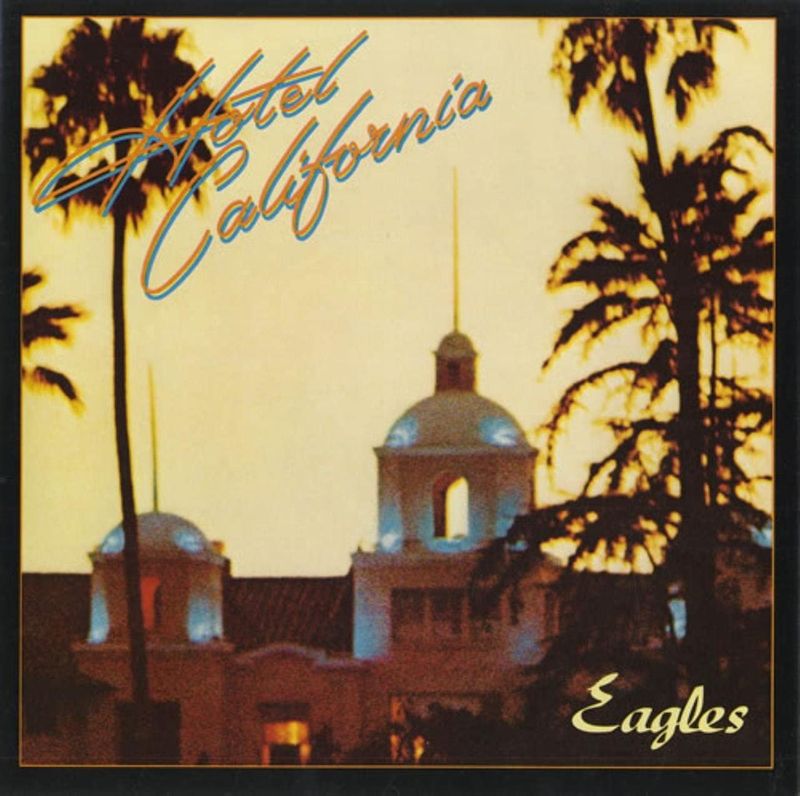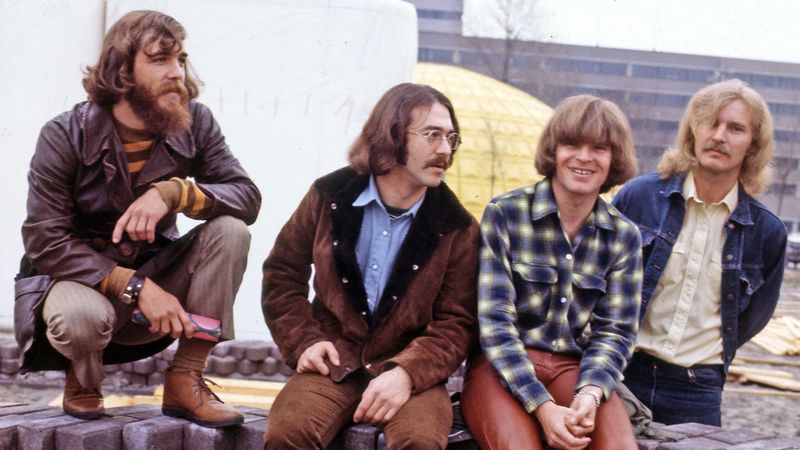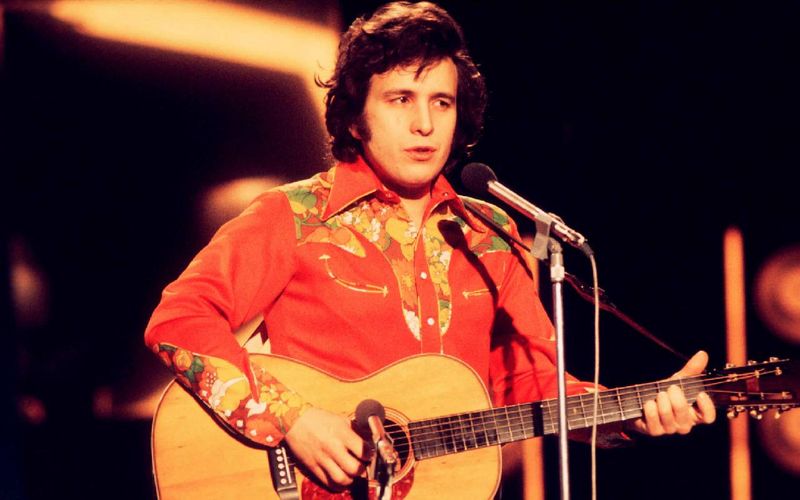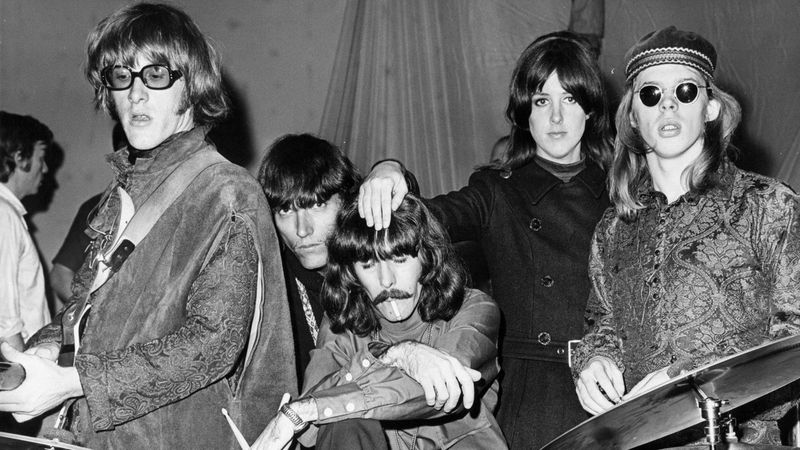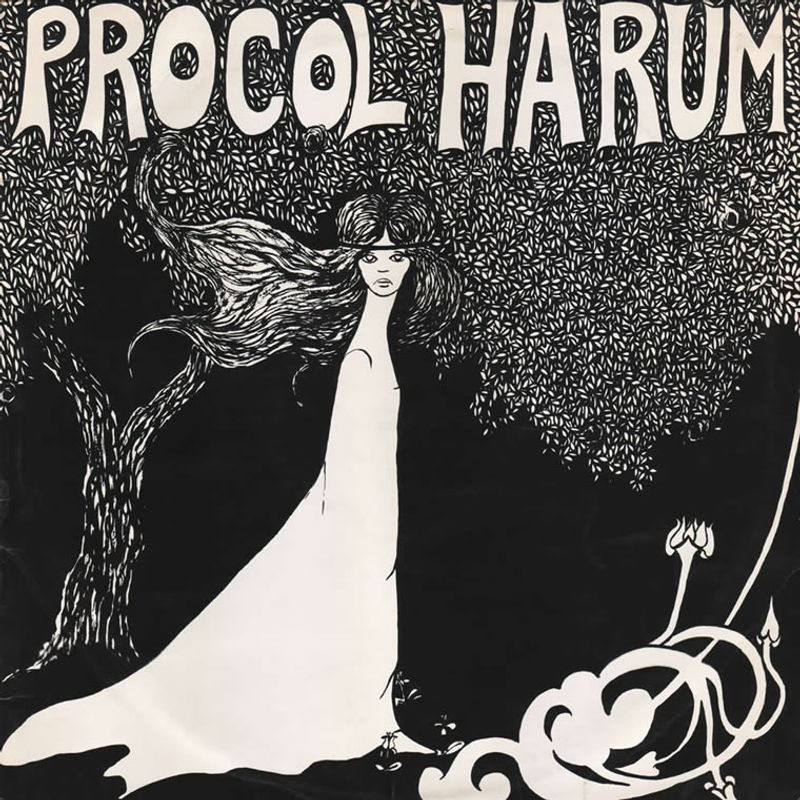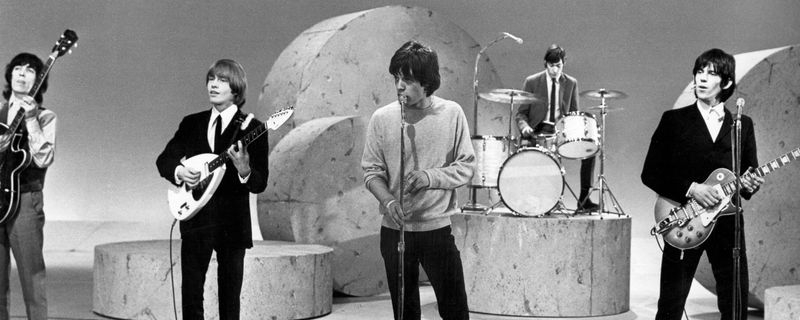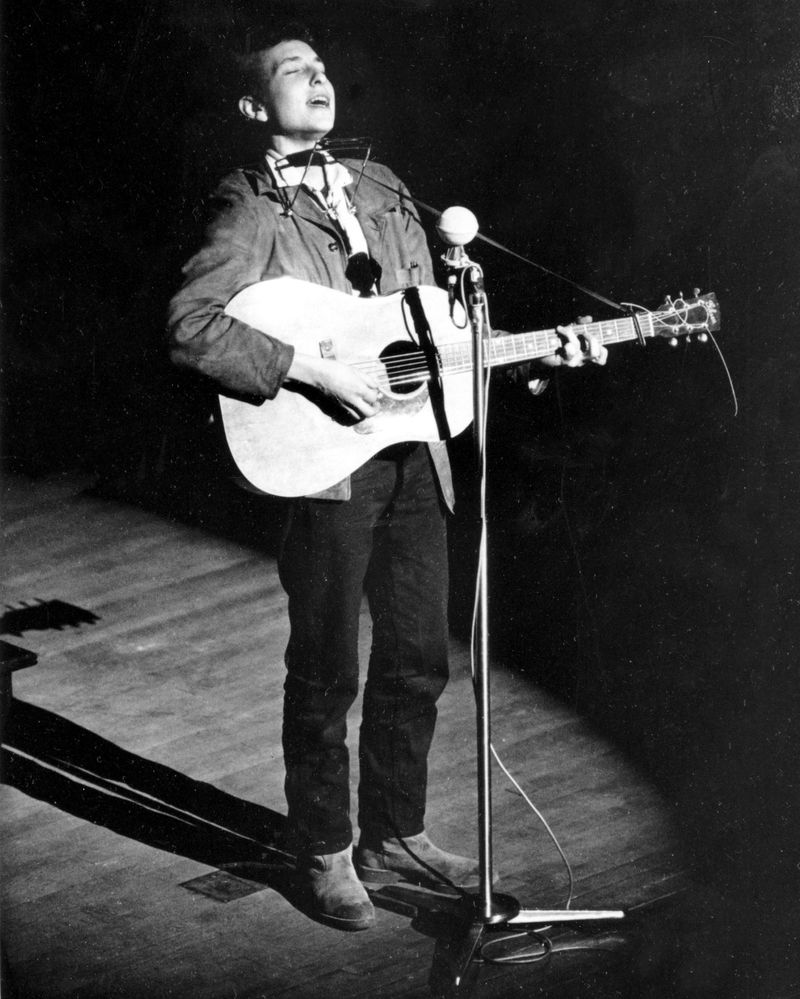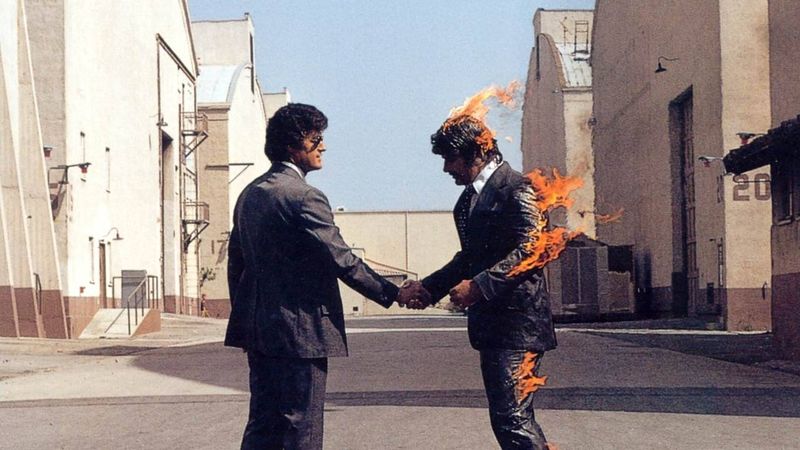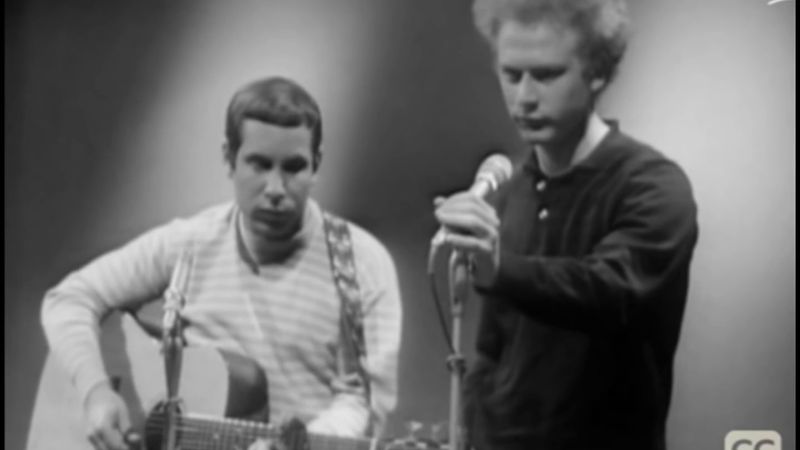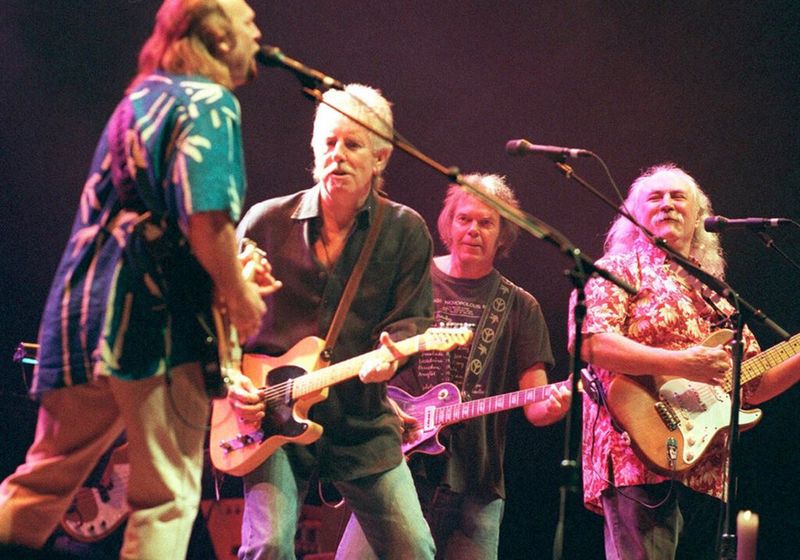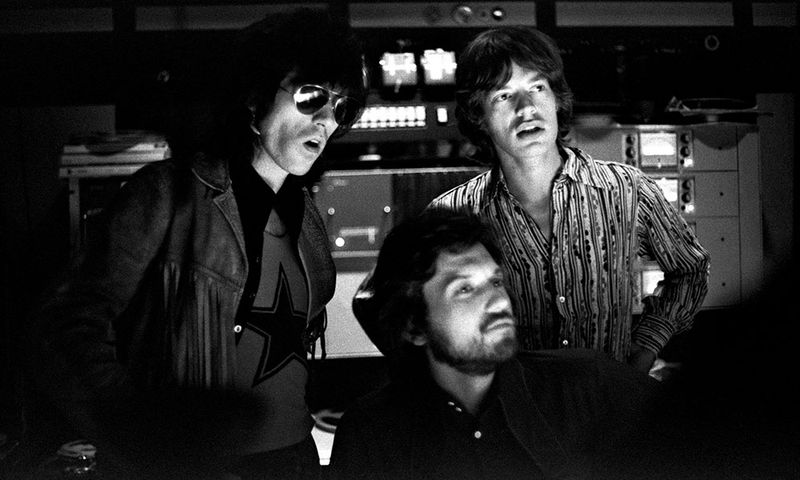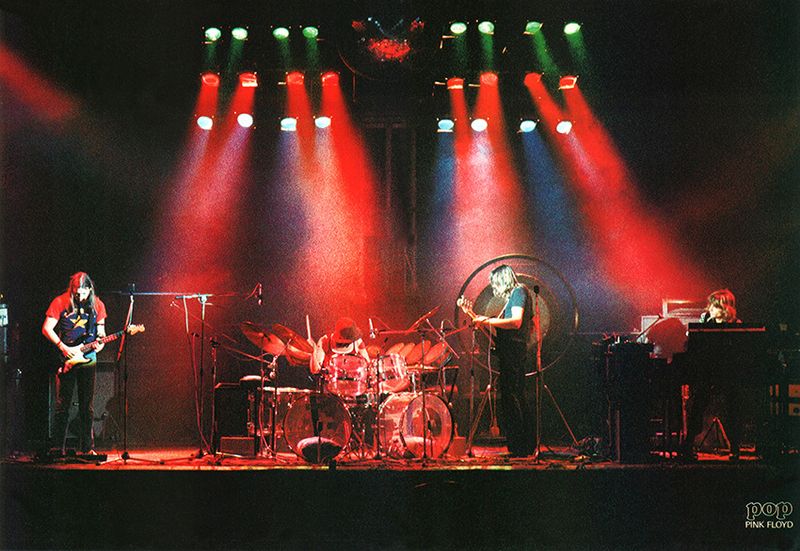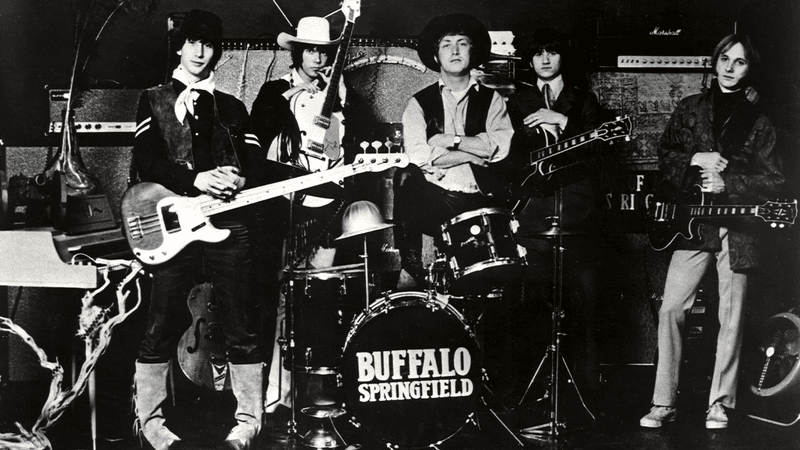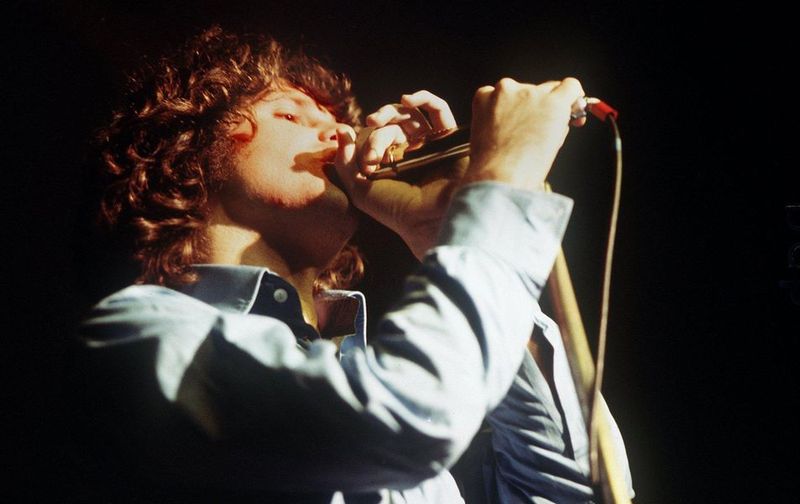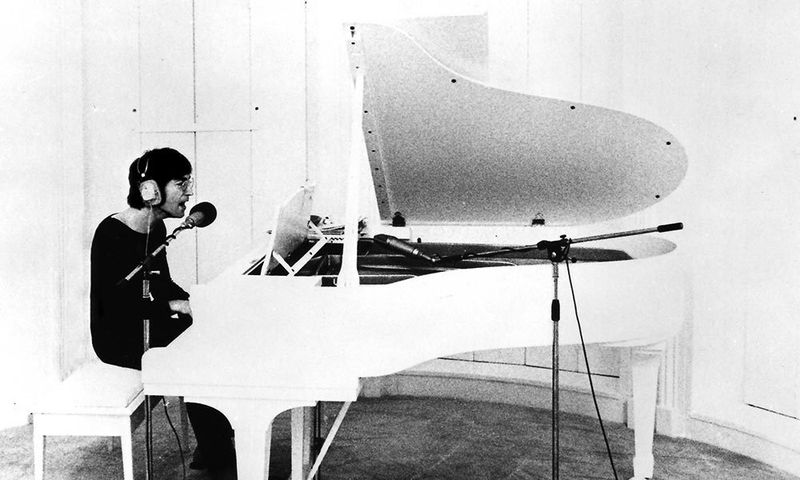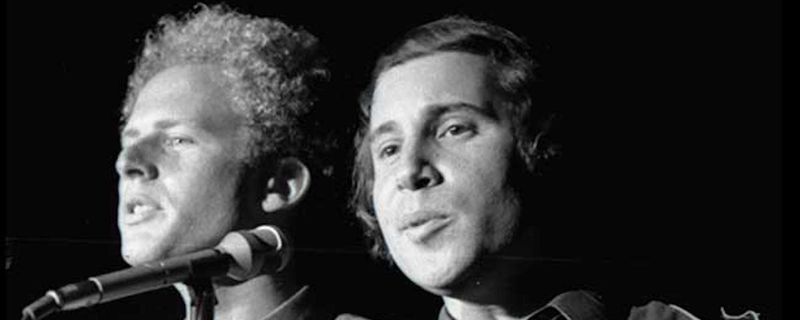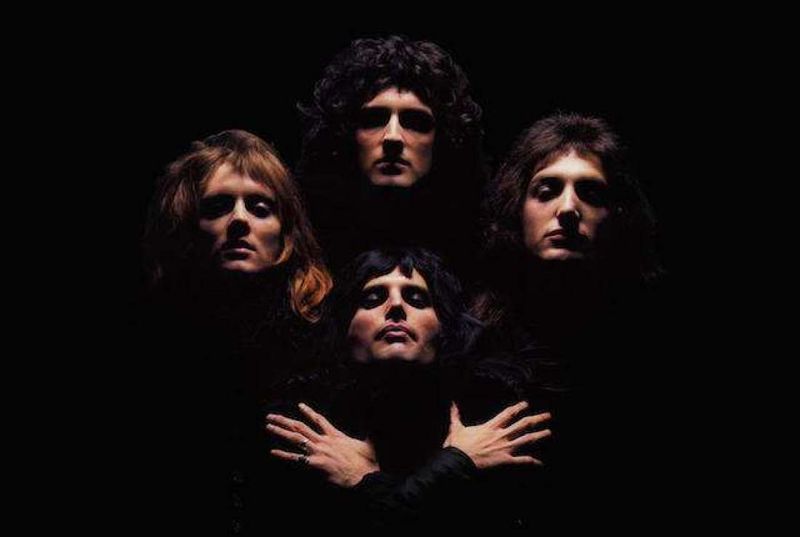Explore the fascinating and sometimes surprising stories behind 20 iconic anthems from the 60s and 70s. Each song has a unique history, offering insights into the cultural and social dynamics of the era.
From protest songs to psychedelic anthems, these tracks reflect the turbulent and transformative times in which they were created. Discover the hidden meanings, inspirations, and messages behind these legendary tunes.
1. “Hotel California” – Eagles (1976)
“Hotel California” by the Eagles is more than just a rock classic; it’s a haunting allegory of the excesses of the 1970s. The song paints a picture of a traveler who checks into a luxurious hotel only to find himself trapped in a hedonistic nightmare.
It symbolizes the dark side of the American Dream, highlighting the perils of indulgence and addiction. The narrative unfolds like a suspenseful movie, each verse pulling you deeper into its enigmatic world.
Despite its luxurious setting, the song’s ominous tone warns listeners of the dangers of excess and moral decay.
2. “Fortunate Son” – Creedence Clearwater Revival (1969)
Creedence Clearwater Revival’s “Fortunate Son” is a searing critique of the social and economic inequalities highlighted by the Vietnam War.
The anthem voices the frustration of those who were drafted, contrasting them with the privileged sons of affluent families who avoided service. Through a driving rhythm and impassioned vocals, the song captures the disillusionment of an era.
The lyrics underscore the resentment felt by many towards a system perceived as unjust and biased. Its enduring appeal lies in its powerful message, which resonates with anti-establishment sentiments and the call for social justice.
3. “American Pie” – Don McLean (1971)
Don McLean’s “American Pie” is an epic reflection on the loss of innocence in American music and culture. Inspired by the tragic death of Buddy Holly, the narrative spans a decade marked by significant societal changes.
The song’s lyrics weave a tapestry of events and figures, creating a poignant commentary on the decline of the rock and roll era.
With its nostalgic tone and rich symbolism, “American Pie” captures the spirit of a generation grappling with change. Listeners are drawn into its enigmatic verses, each line offering a new layer of historical and emotional significance.
4. “Lucy in the Sky with Diamonds” – The Beatles (1967)
“Lucy in the Sky with Diamonds” by The Beatles is often speculated to be about LSD, though John Lennon consistently denied this. Instead, he attributed inspiration to a drawing by his son Julian.
The song immerses listeners in a dreamlike world filled with whimsical imagery and surreal landscapes. Its psychedelic soundscape mirrors the vivid and abstract nature of its lyrics.
Despite the controversy surrounding its meaning, the track remains a quintessential example of the 1960s counter-culture. It invites listeners to explore their imaginations, transcending the ordinary through its kaleidoscopic vision.
5. “White Rabbit” – Jefferson Airplane (1967)
Jefferson Airplane’s “White Rabbit” is a psychedelic anthem that draws heavily on Lewis Carroll’s “Alice in Wonderland” for its imagery. The song’s lyrics create an ethereal journey, highlighting themes of curiosity and altered perception.
Filled with references to the 1960s counter-culture, it speaks to the era’s fascination with mind-expanding experiences. The crescendo builds to a dramatic finish, symbolizing the peak of a psychedelic experience.
While it celebrates exploration and non-conformity, “White Rabbit” also serves as a cautionary tale about the seductive allure of substance experimentation and its potential consequences.
6. “A Whiter Shade of Pale” – Procol Harum (1967)
Procol Harum’s “A Whiter Shade of Pale” is renowned for its enigmatic lyrics and haunting melody. The song’s surreal imagery, filled with biblical and classical references, invites varied interpretations.
Its melancholic tone captures a sense of longing and introspection. The organ-driven sound evokes a timeless quality, making it a staple of the psychedelic era.
While its meaning remains elusive, the song’s emotional depth resonates with listeners, offering a unique blend of poetic mystique and musical elegance. Each listen reveals new layers, inviting audiences to unravel its cryptic narrative and emotional nuance.
7. “Sympathy for the Devil” – The Rolling Stones (1968)
The Rolling Stones’ “Sympathy for the Devil” poses a provocative narrative from the perspective of Lucifer, chronicling humanity’s historical transgressions.
The song’s rhythm and lyrics convey an unsettling charm, urging listeners to confront the darker aspects of human nature. Through references to historical events, it challenges audiences to acknowledge complicity in evil.
The duality of its upbeat sound and sinister theme creates a captivating tension. This track forces a reflection on morality and the perennial struggle between good and evil, leaving an indelible mark on rock history with its daring exploration of controversial themes.
8. “Blowin’ in the Wind” – Bob Dylan (1962)
Bob Dylan’s “Blowin’ in the Wind” stands as a timeless anthem, posing profound questions about peace, freedom, and human rights. The song’s simplicity belies its powerful message, encouraging introspection and action.
With its folk roots and philosophical tone, it became a cornerstone of the civil rights movement. Each verse challenges listeners to seek answers within themselves, fostering a sense of collective responsibility.
The imagery of questions “blowin’ in the wind” underscores the elusive nature of truth and justice. Dylan’s evocative lyrics resonate across generations, offering hope and a call to conscience in the face of adversity.
9. “Wish You Were Here” – Pink Floyd (1975)
Pink Floyd’s “Wish You Were Here” serves as a poignant tribute to former bandmate Syd Barrett. The song reflects on themes of absence, longing, and the impact of mental illness.
Its haunting melody and introspective lyrics evoke a deep sense of loss and nostalgia. The track’s simplicity contrasts with its profound emotional depth, capturing the essence of longing for someone lost.
The band’s personal connection to Barrett adds a layer of authenticity and poignancy. Through its melody and message, “Wish You Were Here” invites listeners to reflect on the fragility of relationships and the enduring impact of absence.
10. “The Sound of Silence” – Simon & Garfunkel (1964)
Simon & Garfunkel’s “The Sound of Silence” eloquently critiques society’s struggle with meaningful communication. The song’s haunting melody and poetic lyrics reveal a world where superficial noise drowns out genuine connection.
The imagery of “silent darkness” highlights the isolation and disconnect prevalent in modern life. Through its somber tone, the song urges listeners to seek deeper understanding and empathy.
The track’s enduring appeal lies in its ability to articulate the pervasive sense of alienation. By confronting the silence within and around us, it encourages a more profound engagement with the world and each other.
11. “Ohio” – Crosby, Stills, Nash & Young (1970)
“Ohio” by Crosby, Stills, Nash & Young delivers a raw response to the Kent State shootings, capturing the outrage and sorrow of a nation. The song’s urgent tone reflects the visceral impact of witnessing government oppression.
With its powerful lyrics, “Ohio” became an anthem of resistance, demanding accountability and justice. The stark imagery of students confronting armed forces underscores the peril of dissent and the high stakes of activism.
This track remains a potent reminder of the struggle for civil rights and the enduring need for vigilance against abuses of power in all forms.
12. “Blackbird” – The Beatles (1968)
The Beatles’ “Blackbird” serves as an eloquent metaphor for the Civil Rights Movement and Black empowerment. The song’s gentle melody and hopeful lyrics convey a message of resilience and liberation.
Inspired by the struggles for racial equality, it encourages listeners to embrace change and overcome adversity. The imagery of a blackbird taking flight symbolizes freedom and the dawning of a new era.
Through its simplicity and grace, “Blackbird” resonates as a timeless call for justice and unity. It invites reflection on progress and the courage required to continue striving for equality and human rights.
13. “Gimme Shelter” – The Rolling Stones (1969)
The Rolling Stones’ “Gimme Shelter” offers a chilling reflection on the chaos and violence of the late 1960s. The song’s urgent tone and evocative lyrics capture a world teetering on the brink of disaster.
Themes of war, social unrest, and existential threat resonate throughout, highlighting the era’s pervasive anxiety. The vivid imagery of seeking shelter from an impending storm symbolizes the universal desire for safety and peace.
Its haunting melody and raw energy encapsulate the tumultuous spirit of the times. “Gimme Shelter” endures as a powerful testament to the resilience and fragility of the human condition.
14. “Time” – Pink Floyd (1973)
Pink Floyd’s “Time” presents a philosophical exploration of mortality and the passage of time. The song’s evocative soundscape and introspective lyrics convey a sense of urgency and reflection.
It prompts listeners to confront life’s fleeting nature and the regrets born of unfulfilled potential. The haunting imagery of clocks and ticking underscores the relentless march of time.
Through its profound narrative, “Time” challenges audiences to seize the present and reflect on their life’s purpose.
Its enduring message resonates across generations, offering both a warning and an inspiration to live fully and authentically in the face of life’s impermanence.
15. “For What It’s Worth” – Buffalo Springfield (1966)
Buffalo Springfield’s “For What It’s Worth” is often mistaken as an anti-war anthem, yet its inspiration lies in the Sunset Strip curfew riots. The song captures the tension and unrest of a community grappling with authority.
Its haunting melody and poignant lyrics convey a sense of urgency and reflection. By focusing on civil rights and personal freedom, the track became a rallying cry for social change.
The imagery of protest and resistance underscores the era’s spirit of defiance. “For What It’s Worth” remains a powerful call for awareness and action, urging listeners to challenge injustice and strive for equality.
16. “The End” – The Doors (1967)
The Doors’ “The End” takes listeners on a raw, poetic journey into the depths of human psyche. The song’s haunting melody and introspective lyrics explore themes of madness, conflict, and self-destruction.
Its epic narrative unfolds like a cinematic experience, with vivid imagery and existential reflections. The track’s intensity and enigmatic nature invite interpretation, challenging audiences to confront their inner demons.
Its evocative soundscape creates an atmosphere of both tension and release. “The End” endures as a compelling exploration of the human condition, offering insights into the complexities of identity and the struggle for understanding.
17. “Imagine” – John Lennon (1971)
John Lennon’s “Imagine” presents a utopian vision of a world without barriers and division. The song’s simple melody and profound lyrics challenge listeners to envision a society free from religion, borders, and materialism.
Its hopeful message encourages reflection and dialogue, promoting peace and unity. The imagery of a united humanity living in harmony resonates deeply, offering a timeless call for change and understanding.
“Imagine” continues to inspire generations, inviting audiences to dream of a better world. Its enduring impact lies in its ability to transcend cultural and ideological divides, fostering a shared vision of hope and possibility.
18. “Behind Blue Eyes” – The Who (1971)
The Who’s “Behind Blue Eyes” offers an introspective look into the soul of someone misunderstood and emotionally fragmented. The song’s poignant lyrics and haunting melody reveal a struggle for empathy and connection.
Its duality reflects the tension between outward appearances and inner turmoil. With an emotive performance, the song captures the vulnerability and longing for understanding.
The imagery of “blue eyes” symbolizes the depth of emotion hidden beneath the surface. “Behind Blue Eyes” resonates with those who feel isolated and seeks solace in music, reminding audiences of the universal quest for self-acceptance and emotional healing.
19. “Bridge Over Troubled Water” – Simon & Garfunkel (1970)
Simon & Garfunkel’s “Bridge Over Troubled Water” stands as a timeless hymn of hope and comfort. The song’s serene melody and heartfelt lyrics offer solace in times of despair.
It captures the essence of unconditional support and reassurance, creating a spiritual connection with listeners. The imagery of a bridge signifies a passage from turmoil to tranquility, reflecting the power of compassion.
Its uplifting message continues to inspire, offering strength and encouragement. “Bridge Over Troubled Water” endures as a beacon of light and a reminder of the healing power of empathy and understanding in an often turbulent world.
20. “Bohemian Rhapsody” – Queen (1975)
Queen’s “Bohemian Rhapsody” is a masterpiece of musical fusion, combining opera, rock, and ballad elements. The song’s enigmatic lyrics and theatrical composition create an epic narrative filled with mystery and emotion.
Its shifting dynamics and intricate harmonies mirror the protagonist’s inner conflict and journey. The track’s innovative structure challenges traditional song forms, offering a unique experience with each listen.
“Bohemian Rhapsody” invites audiences to explore themes of guilt, redemption, and artistic expression. Its legacy as a cultural phenomenon endures, sparking intrigue and admiration for its bold creativity and profound impact on music history.
